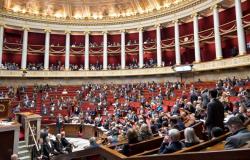European natural gas prices for summer 2026 remain in a backwardation situation compared to winter 2026, according to data from Commodity Insights. This phenomenon, where summer contracts trade at higher prices than winter contracts, reflects the uncertainties linked to the summer injection season and the arrival of new LNG production capacity later in the year. .
Current state of prices and market dynamics
The Dutch TTF market's summer contract for 2026 was valued at €34.485/MWh as of November 25, compared to €34.22/MWh for the winter contract. This difference of 26.5 euro cents per MWh marks a rare and accentuated trend compared to a contango structure observed the previous year.
This dynamic stems from delays in the development of new LNG liquefaction capacities. While these facilities are expected to begin operating as early as winter 2026, additional volumes will mainly arrive in 2027, fueling short-term price volatility.
Capacity growth in the United States and Qatar
In 2026, global LNG production is expected to increase to 494 million tonnes, from around 452 million tonnes in 2025. A significant portion of this growth will come from the United States and Qatar, which currently account for 21% and 19% respectively. of the world market.
In the United States, the delayed Golden Pass LNG project is expected to begin exports in the first quarter of 2026, with a greater impact in the fourth quarter. The country will see its total capacity increase by 20% between the third and fourth quarters. In addition, projects like Sabine Pass and Corpus Christi will also contribute to this increase.
For its part, Qatar plans a significant increase in its exports with the expansion of the North Field East and North Field South projects. These projects are expected to add 32 million tonnes of annual capacity for 2026 and another 16 million in 2027.
Consequences for LNG maritime transport
Despite the increase in supply, the maritime transport market remains under pressure. With a growing number of new builds and an oversupply of ships, freight rates have fallen sharply. In the Atlantic Basin, for example, rates for two-stroke vessels fell to $15,000/day in November 2025, from $197,500/day a year earlier.
Experts say these pressures are likely to persist until 2027, although new EU regulations, such as the Emissions Trading System (ETS), could limit the viability of older ships.
Outlook for the European market
As European gas prices remain high, planned capacity increases are expected to gradually ease tensions on global markets. Nevertheless, traders emphasize that the summer of 2026 will remain marked by uncertainties, particularly regarding the injection season, before a rebalancing expected for the winter.
Current spot prices still reflect this volatility. The DES Northwest European Marker for January 2026 was valued at $14.648/MMBtu as of November 25, well above the $11.128/MMBtu recorded the previous year.





